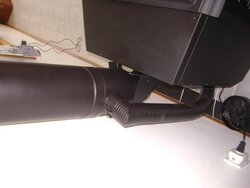Hey all... I've had my P68 in for over 7 weeks now and outside of a few initial kinks, it's been awesome. At install time, the dealer didn't have any pipe to make the outside air connection on the OAK. During this time, I was using the stove and it was impressive.
The dealer came back last weekend (took a while to get the pipe for whatever reason), and finished the job. It's been too warm to use the stove lately, but today we fired it up... First time really the stove has run with pulling the outside air.
Will I notice any increased performance? Just curious.
Thanks.
The dealer came back last weekend (took a while to get the pipe for whatever reason), and finished the job. It's been too warm to use the stove lately, but today we fired it up... First time really the stove has run with pulling the outside air.
Will I notice any increased performance? Just curious.
Thanks.



